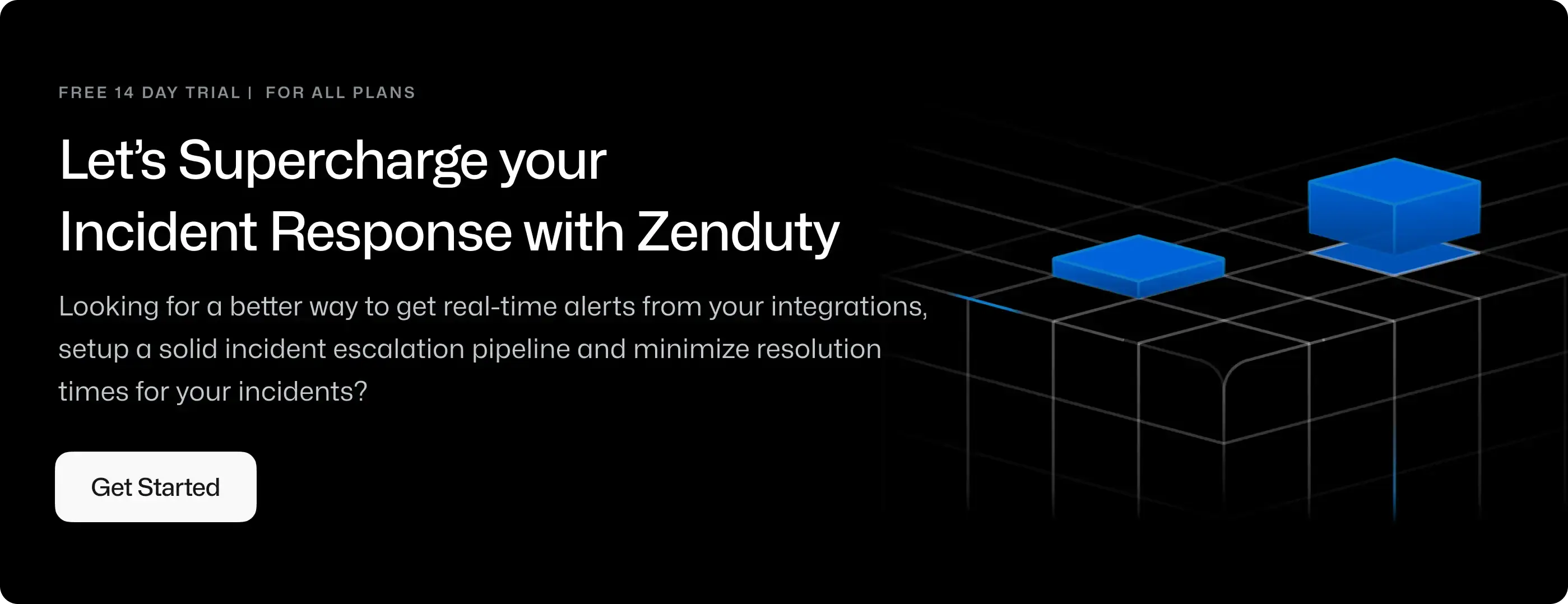Microsoft Dynamics 365 Integration Guide
Microsoft Dynamics is a line of enterprise resource planning and customer relationship management software applications. Microsoft markets Dynamics applications through a network of reselling partners who provide specialized services. Microsoft Dynamics forms part of "Microsoft Business Solutions".
The Zenduty-Dynamics integration helps you escalate critical cases/incidents to the right team, proactively alert them about SLA violations and bring in SMEs and stakeholders into high priority cases.
What can Zenduty do for Microsoft Dynamics 365 users?
With the Microsoft Dynamics 365 Integration, Zenduty routes new Dynamics cases to the right team and notifies them based on on-call schedules via email, text messages(SMS), phone calls(Voice), Slack, Microsoft Teams and iOS & Android push notifications, and escalates alerts until the alert is acknowledged or closed. Zenduty provides your support teams with detailed context around the Dynamics case along with playbooks and a complete incident command framework to triage, remediate and resolve incidents with speed.
Whenever a case is created in Dynamics 365, Zenduty will create an incident. When that case is resolved, Zenduty will auto-resolve the incident.
You can also use Alert Rules to custom route specific Dynamics case alerts to specific users, teams or escalation policies, write suppression rules, auto add notes, responders and incident tasks.
To integrate Microsoft Dynamics 365 with Zenduty, complete the following steps:
In Zenduty:
- To add a new Dynamics integration, go to Teams on Zenduty and click on the team you want to add the integration to.
- Next, go to Services and click on the relevant Service.
- Go to Integrations and then Add New Integration. Give it a name and select the application Dynamics from the dropdown menu.
- Go to Configure under your Integrations and copy the Webhook URL generated.
In Dynamics(you will need Office365-Dynamics Administrator permissions to do the steps below):
We will be using the Dynamics Plugin Registration Tool to create a Webhook action to the webhook URL copied in step 4, for Dynamics "Create" and "Update" actions on the "Incidents" entity in Dynamics.
-
Click here and download and install the Dynamics PluginRegistrationTool.
-
Open the PluginRegistration tool. Click on "Create new connection" and login with your administrator account.
-
Inside Plugin Registration tool, click on Register -> Register New Web Hook.
-
Specify any name for the webhook. In the Endpoint URL, paste the URL copied without any query string part. For Authentication select WebhookKey and paste the URL copied in step 4 to register the Webhook.
-
Register a new step inside the Webhook. In Message select "Create". For Primary Entity, select "Incident". For event handler, select Webhook registered in step 8. For Event Pipeline stage of execution select "PostOperation". For Execution mode select "Asynchronous". For Deployment, select "Server".
-
Register a new step inside the Webhook. In Message select "Update". For Primary Entity, select "Incident". For event handler, select Webhook registered in step 8. For Event Pipeline stage of execution select "PostOperation". For Execution mode select "Asynchronous". For Deployment, select "Server".
-
Dynamics 365 is now integrated with Zenduty.
